In anticipation of our extended stay here in Copenhagen, I took an architecture class last year entitled “Copenhagen: The Bridge Between Mainland Europe and the Nordic Countries.” Taught by a practicing architect , originally from Italy, with the fabulous name of Pierluigi Serraino, it got me excited about all the amazing architecture I would be exposed to while here, from historic to very modern.
Sadly, on April 16, 2024, two weeks before the start of the class, one of the most iconic old buildings in Copenhagen, Borsen (stock exchange), dating from the 1600’s, burned down having survived several fires in the 18th and 19th century that destroyed everything around it. Especially upsetting to Danes was the loss of the dragon spire that topped the building. Ironically, the fire last year was started by workers who were doing restoration work on the building.

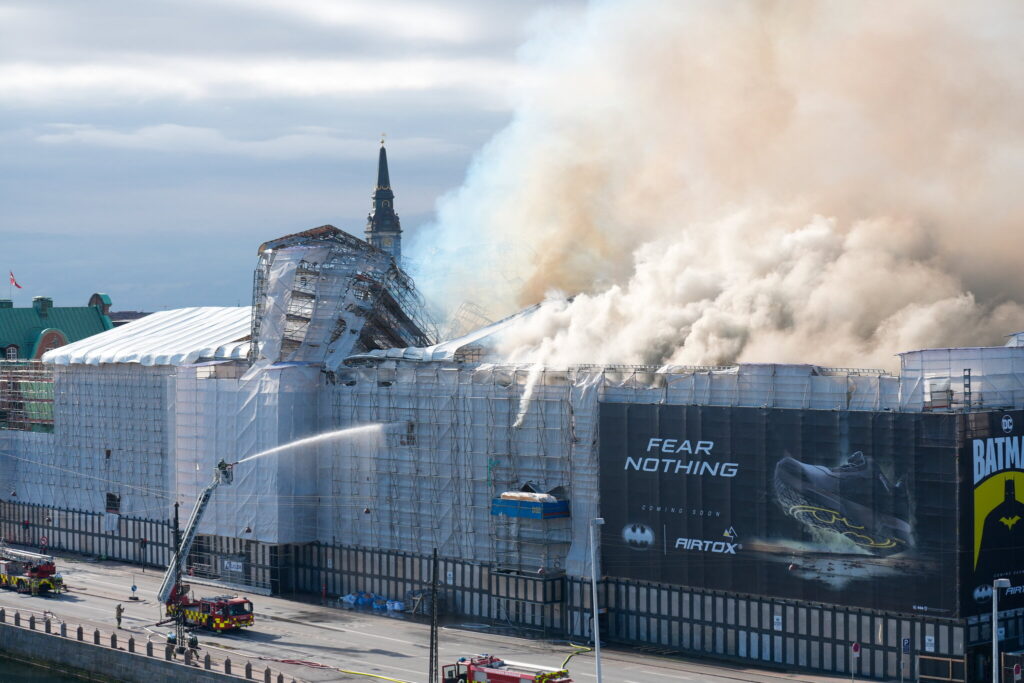
The fire is reminiscent of Paris’s Notre Dame’s cathedral burning in 2019, also started by workers “restoring” the building. The French managed to rebuild and, amazingly, reopen Notre Dame last year, so within just over 5 years of the fire. The Danes are now embarking on a similar effort, though there is much less remaining of Borsen than there was of Notre Dame so I imagine it will be a significantly longer process. They did save much of the statuary and other items from inside the building, though many are damaged, but the building itself is a shadow of its former self.
My architecture professor recommended that I purchase a book from the Danish Architecture Center (DAC) called Guide to New Architecture in Copenhagen, which provides photos and descriptions of projects built in the last 30 years or so. DAC also created an app with similar info so when I am wandering around, I can navigate to those buildings or landscapes and read about each one. It’s been a gold mine for me and a fun way to structure my outings. They also run a tours that we have availed ourselves of.
Denmark came somewhat late in the game to architecture with its first architecture school opened at the end of the 18th century. Prior to that, Danish kings had to hire foreign architects or foreign educated Danes. But since that time, Denmark has punched well above its weight in the design world, not only architecturally but in furniture design. I grew up in a home that included Danish designed furniture so am particularly enamored of it and have been salivating over the many beautiful chairs on offer in furniture stores around the city.
One building I learned of in my class that I definitely wanted to visit is neither old or new but in between. Grundtvig’s Church was built from 1921-1940 and designed by Peder Vilhelm Jensen-Klint in 1913. The church, is a rare example of “Expressionist” architecture and is like a traditional Danish church, with its stepped gables, on the outside but with traditional Gothic proportions. It is made of yellow brick, a very traditional material here, and has no adornment inside. However, the dramatic proportions, extreme simplicity, and beautiful natural light render it truly heavenly, even to an atheist like me.
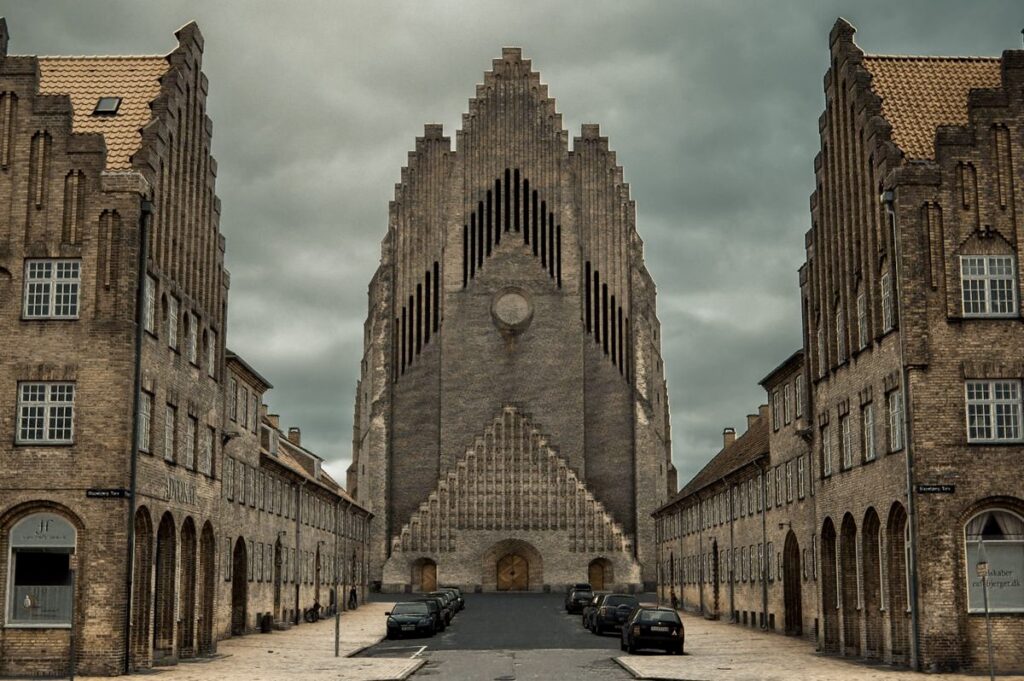
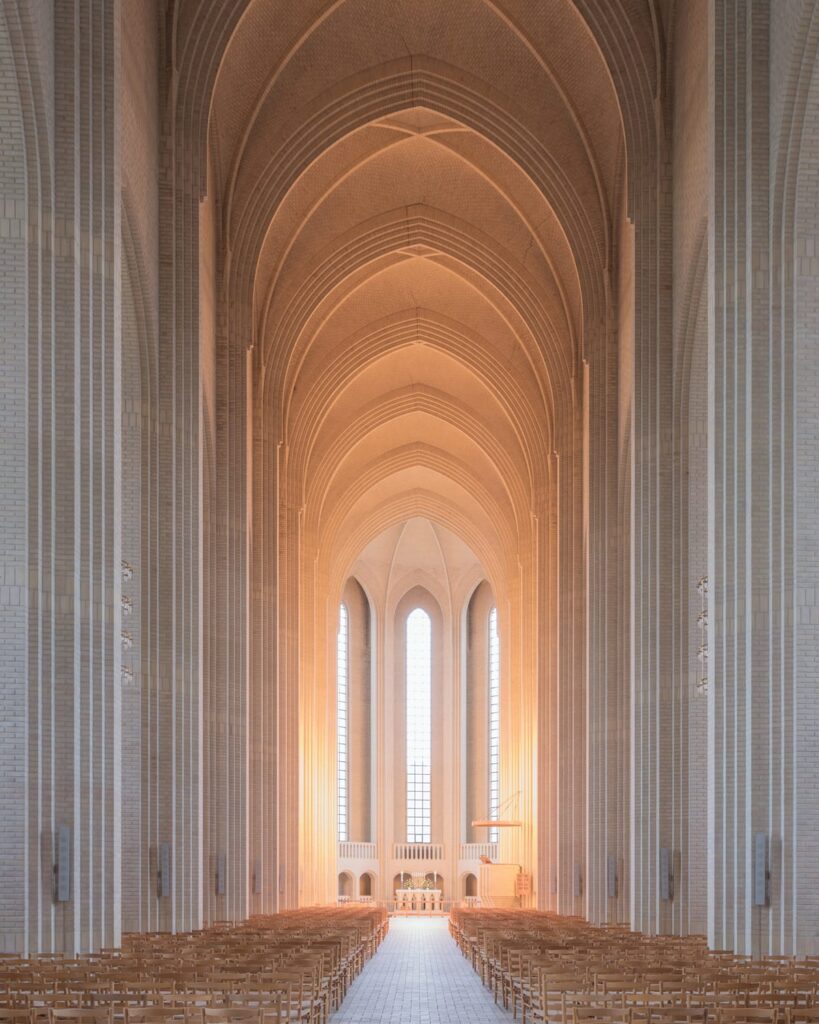
What I have learned from all of my tramping around Copenhagen looking at buildings and landscapes is just how much effort the Danes make to create both functional and beautiful spaces. The buildings also reflect their cultural values. For example, it is impressive how many architect designed child care centers and schools there are. This is a pretty fantastic place to be a child, between the generous parental leave, universally subsidized childcare, and lovely facilities for children.
I visited (from the outside only) one kindergarten called the Authors’ House, designed by Cobe, that was really beautiful. It had many levels, each with outdoor access including on roof gardens, was made out of quality materials, and looked like a fun place to be a child. The neighborhood has streets named after Danish authors and they integrate this into the curriculum as well. “The orange-red membrane applied to the steel skeleton echoes the historic brick buildings nearby,” according to the description and as you can see from my photo.
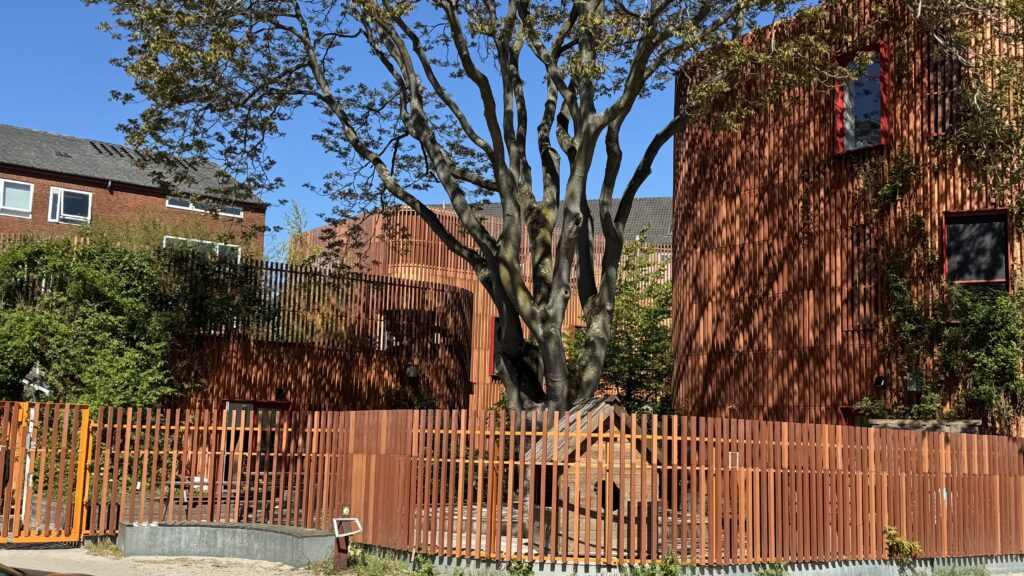
Another example of both functional and beautiful design are the many residential developments created to satisfy a variety of housing desires. We visited one, VM Bjerget (VM Mountain), designed by BIG (Bjarke Ingels Group – a Danish “starchitect”) that is meant to be a series of suburban style homes built vertically. The residences are stacked so that the roof of one is the garden terrace of the one above it and, while the terraces face an old residential neighborhood, the other side faces the metro and the city and is covered with high tech metal and glass with a photograph of a mountain superimposed on it. The development offers a suburban lifestyle in an urban setting.
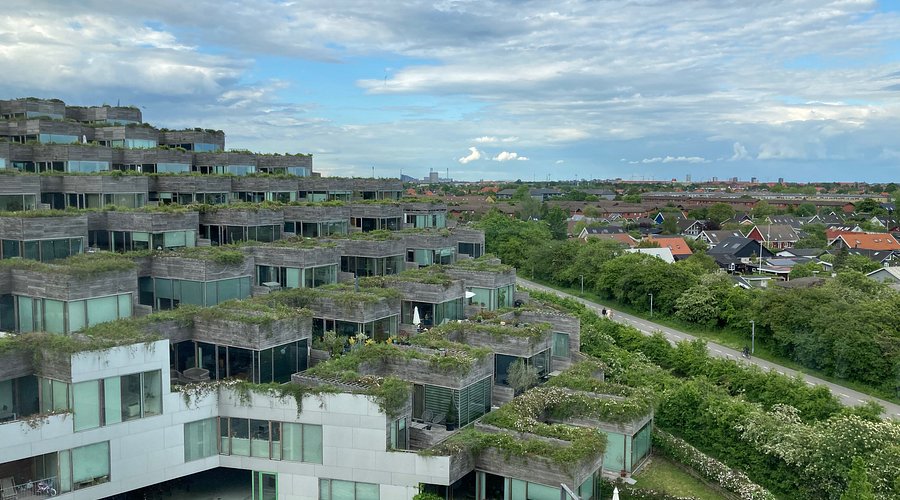
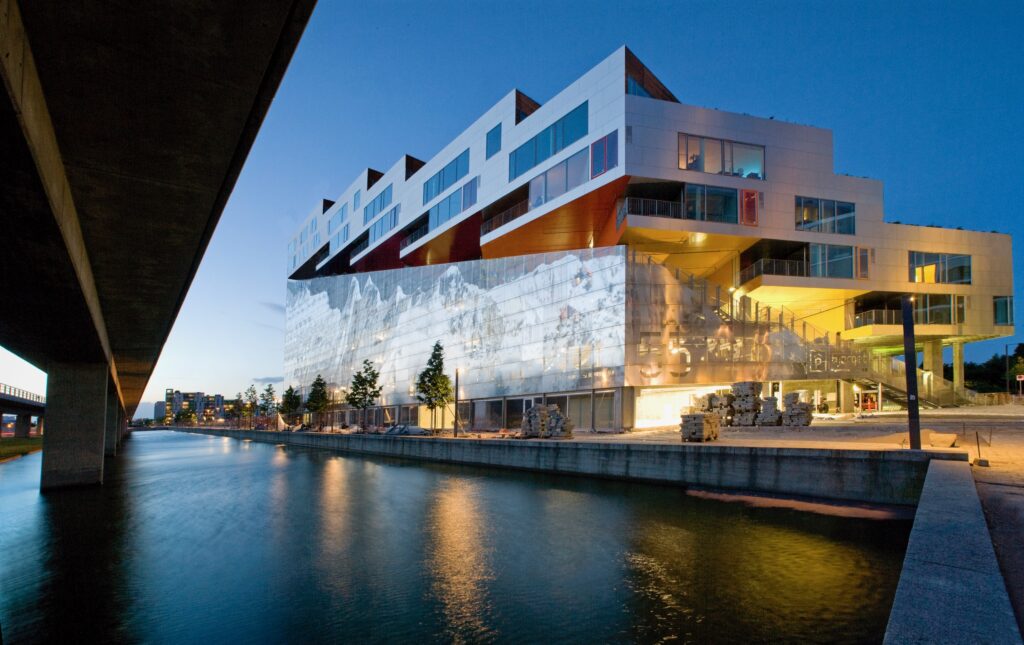
Another interesting residential building, also designed by BIG, is one built for “social housing,” meaning it is run by a nonprofit and the rents are below market. This building is made of prefabricated modules stacked with alternating blocks set back from one another and then the windows were framed in wood.
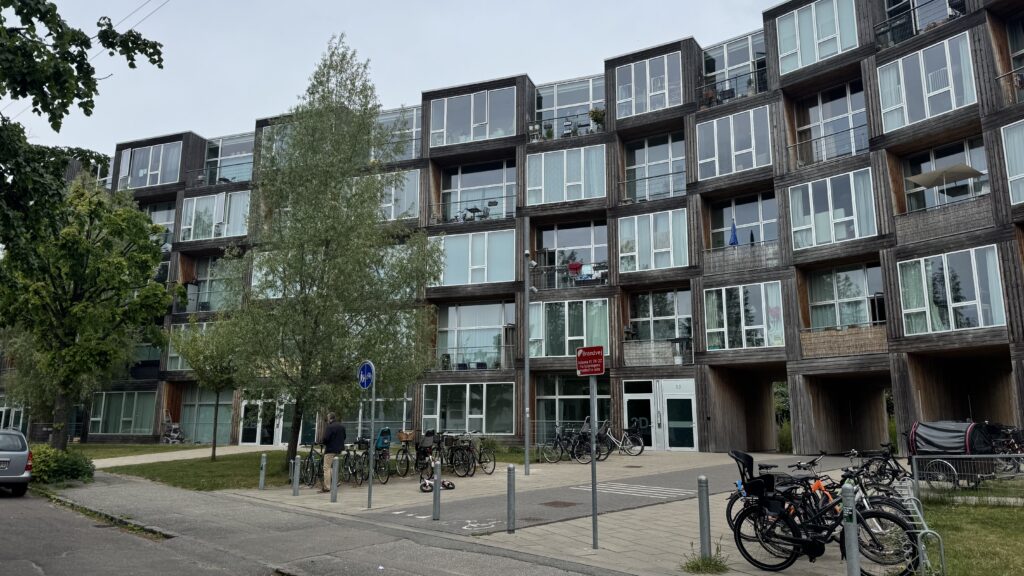
20% of the housing stock in Denmark, over half a million units, is social housing so one in five Danes live in it but there is still never enough and there are long waiting lists. Strangely, most social housing is not means tested so people simply get on a list without needing to prove their income. Inequality has been increasing in recent years and rents have been rising but we have not encountered any obvious homelessness in our time here so far.
Finally, I’ve been impressed by the public spaces that architects have gotten involved in designing. There are 13 swimming areas in and around the Copenhagen harbor. One that is particularly fun is a bit south toward the airport at Kastrup beach. Designed by White Arkitekter, it is officially the Kastrup Sea Baths but also dubbed “the snail” because of its shape. All the swim areas require users to swim in the (very cold) ocean water but provide sunbathing space as well. This one also has a 5 meter high diving platform. Danes are very hardy people who immediately take advantage whenever the weather is good (which it isn’t today as I gaze out on a relentlessly rainy day).
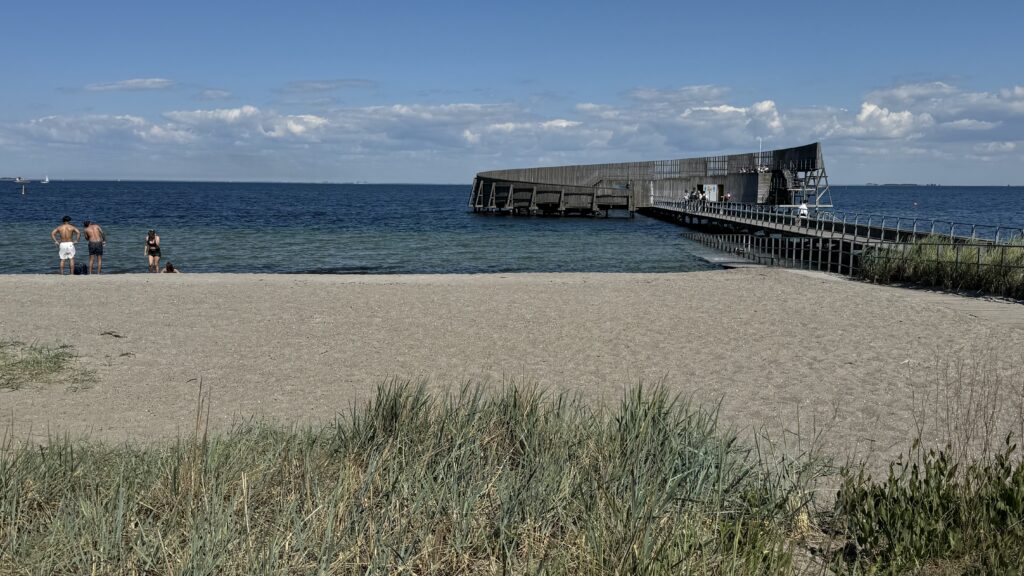

Overall, I have been extremely impressed by the creativity and commitment this society has to design. I focused on the exterior of buildings but I also love the Danish interiors. Some believe that living with good design is one of several reasons the Danish people rank so high on the global happiness index. Beautiful and functional design benefits everyone in society, especially when focused on creating appealing public and residential spaces for all.
Lovely photos and insightful commentary, April! It was fun to be in Pierluigi Serraino’s architecture class with you at OLLI, and now you’ve reminded me of many of the things we learned. I really enjoyed your first Denmark blogpost, and I’ve begun reading The Almost Perfect People, per your recommendation. I can’t wait to visit Copenhagen and Aarhus next summer – sorry we won’t be overlapping. Jackie
I think your blogs should be required reading for anybody who is about to embark on a visit to Copenhagen and its environs. This one about design particularly spoke to me. I am enamored with the interior of the Grundtvig church. I told you this before, but you have a gift. Well you actually have many gifts and “travel blogging“ is just one of them.
Thank you Angela! That is very kind of you to say.
What a fascinating post and great pictures to illustrate. The church and Borsen are/were stunning as are the kindergarten and housing complex. Helps me feel I am there. What a treat to be there and to have enough time to experience it more deeply. Thank you!!!
Beautiful. Thnk you so much for bringing so much visual joy into my lifw.
Fondly,
Sandra
What an amazing and inspiring interior at the Grundtvig church! Thanks for helping me see thru your eyes (and via your photos) all the amazingly interesting architecture in and around Copenhagen. Looking forward to your photos from Louisiana!
Thank you, April, for another fascinating and thoughtful piece.
Love this April. You are inspiring me to visit.